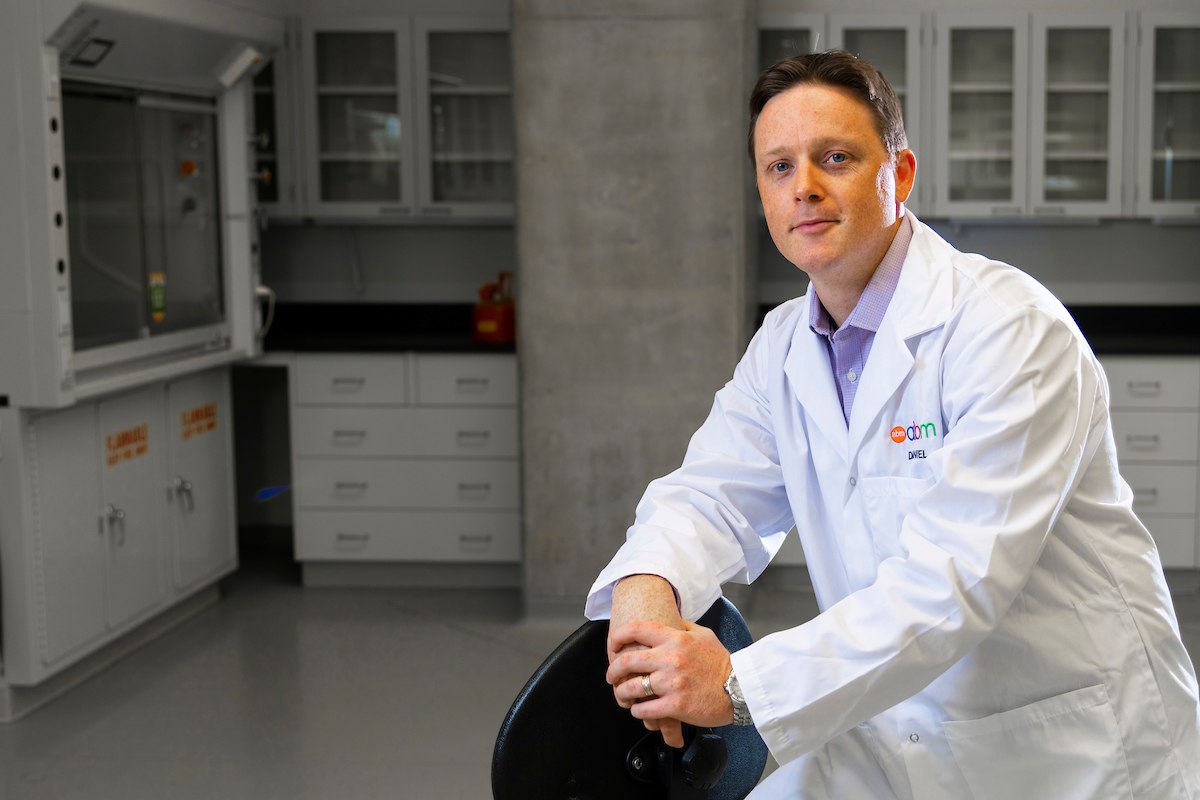
Welcoming Daniel Charlebois, new assistant professor in the Department of Physics, whose biophysics research has applications in combating drug-resistant infections. Photo credit: John Ulan
Drug resistance is a topic of increasing concern for human health-and the key to understanding it lies at the intersection of physics and biology, according to new assistant professor in the Department of Physics, Daniel Charlebois. His research focuses on understanding how cells cope with changes in their environment and how to treat drug-resistant infections.
Charlebois joins the University of Alberta campus community from Stony Brook University in New York, where he recently completed an NSERC postdoctoral fellowship.
Join us in welcoming Daniel Charlebois.
What brought you to the University of Alberta?
The Department of Physics at the University of Alberta is building a world-class biophysics research group and is developing a new undergraduate biophysics degree program. The Department of Physics has given me the opportunity to combine theory and experiments in my research program, something that I enjoy immensely and believe is important for making major breakthroughs in biophysics. Finally, I am originally from Calgary, have many friends and family in Alberta, and I love our Rocky Mountains!
Tell us about your research program.
I combine physics and biology to study genes, genetic networks, evolution, and antimicrobial (i.e. drug) resistance. More specifically, my research program develops biophysical models of living cells and then tests theoretical predictions with experiments on genetically engineered cells and pathogens in the laboratory.
At a fundamental level, my research program aims to better understand how living cells cope with changes in their environment and how drug resistance develops, and at an applied level, how to better genetically engineer cells and treat patients with drug-resistant infections and cancers. This research is important as genetically engineered cells are proving to be an important model system for fundamental research and resistance to antibiotic, antifungal, and chemotherapeutic drugs is an emerging global health crisis.
What inspired you to enter this field?
When I was an undergraduate student completing degrees in biology and physics-which at the time appeared to be completely unrelated fields-at the University of Calgary, a professor named Stuart Kauffman recruited me into his lab and showed me how different fields of science can be combined to make big discoveries. The research I was involved in as an undergraduate student inspired me to such a degree that I went to graduate school instead of medical school and pursued a career in scientific research.
Tell us about your teaching.
I will be teaching PHYS 495/595, a special topics course called Introduction to Biophysics, aimed at upper undergraduate and graduate students in the winter 2020 semester. This course will introduce students to how the concepts and methods from physics can be used to better understand living systems. We will also cover cutting-edge biophysics research relevant to academia and industry, and students will have an opportunity to do a project on a topic that they find exciting. Teaching is important to me for several reasons. First, it gives me the opportunity to pass on the knowledge that I have gained through formal studies and my own research. Second, teaching gives me the chance to gain a broader and deeper understanding of the subject matter. And finally, it is a privilege to mentor and recruit the next generation of biophysicists.
Anything else you'd like to add?
I am recruiting motivated undergraduate and graduate students to join my research group. Contact me if you are interested.